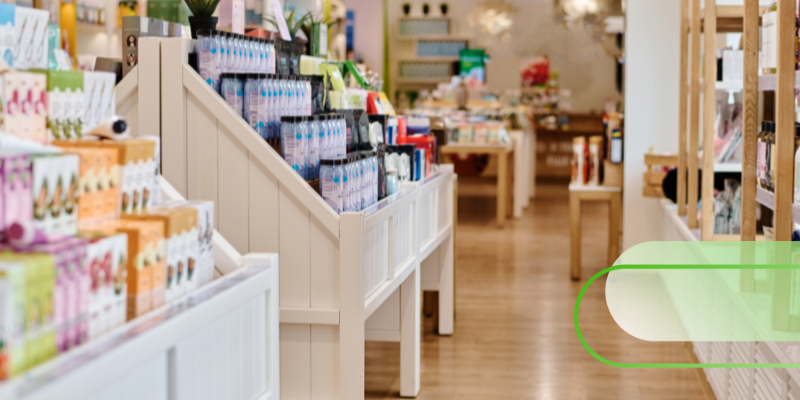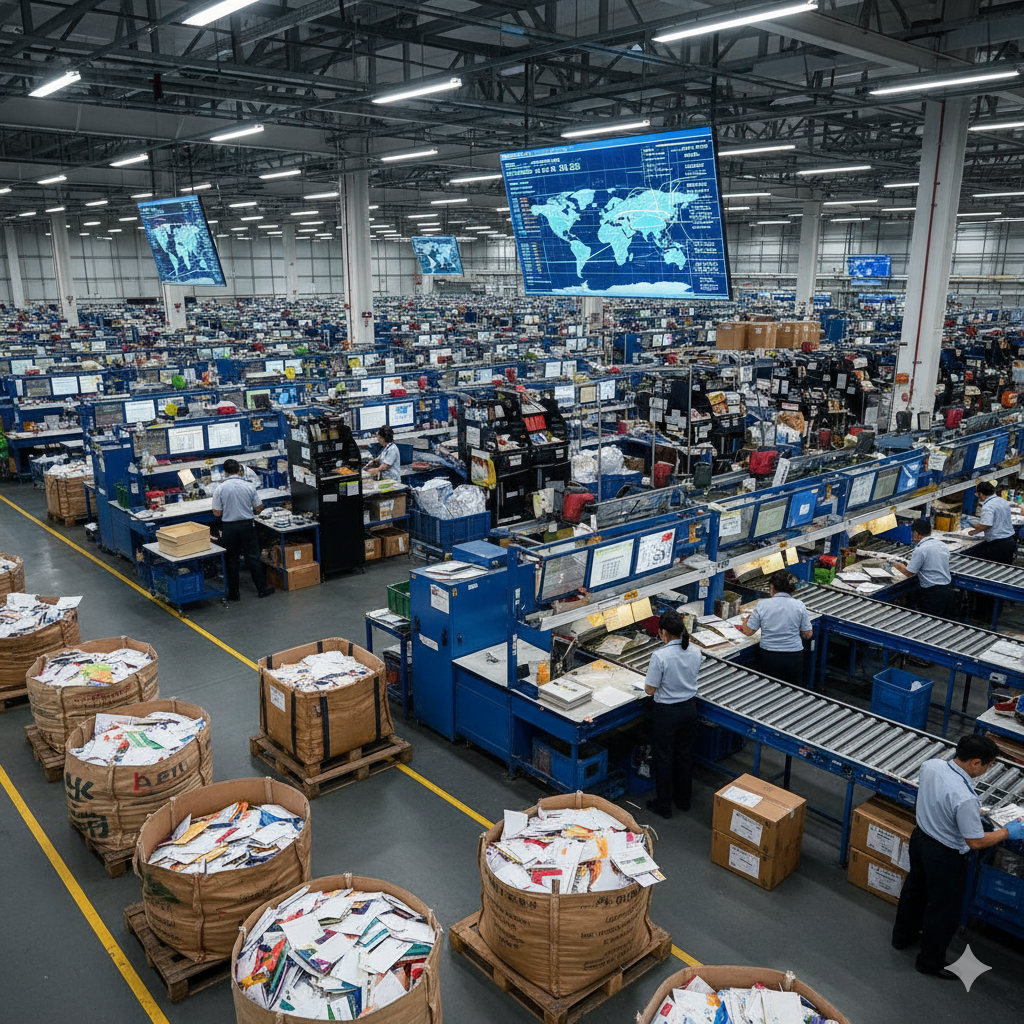The global luxury market is undergoing a substantial transformation. Once dominated by legacy players in established regions, today’s luxury landscape is being shaped by emerging economies and new generations of consumers with different values and expectations. For American luxury brands, especially beauty and fashion brands, this shift means the rules of the game are changing—and keeping up is essential. No longer can luxury be defined solely by traditional ideas of exclusivity and opulence. Instead, it’s about innovation, sustainability, and the ability to connect with a more diverse, digitally savvy audience.
In this evolving market, brands must adjust their strategies to stay relevant. This blog post will dive into the changing definition of luxury, explore the regions and demographics driving the most demand, and offer steps for eCommerce businesses looking to maintain their competitive edge in a world where high-end American fashion needs to resonate across continents.
Step 1: Recognize the Changing Perceptions of Luxury
The concept of luxury is always evolving, and currently it’s shifting away from the flashy, logo-driven products of the past toward something more nuanced—often referred to as quiet luxury. This trend is all about subtlety, refinement, and understated elegance, where the emphasis lies not on bold branding but on superior craftsmanship, high-quality materials, and timeless designs. According to Vogue, quiet luxury reflects a growing preference for opulence that whispers rather than shouts, appealing to those who value elegance without excess.
But it’s not just about aesthetics. Many affluent consumers, especially millennials and Gen Z, are demanding that their purchases reflect their values. These buyers are increasingly drawn to brands that emphasize sustainability and authenticity. Luxury brands like Gucci are leading this movement by incorporating sustainable materials and showcasing artisanal craftsmanship in their designs.
For American brands to stay competitive in this shifting market, the focus must move beyond pushing products. Calvin Klein, Tiffany, and Tom Ford are among the brands already adjusting by embracing storytelling that highlights their rich heritage, craftsmanship, and responsible production practices. The rise of sustainability and ethical fashion means that today’s American luxury brands need to balance high fashion with eco-friendly practices, using materials in ways that reflect a commitment to the environment.
This evolving definition of luxury offers an opportunity for American designers to differentiate themselves by delivering not just high-end items but experiences steeped in authenticity, quality, and purpose—ultimately, what today’s consumer demands most.
Step 2: Find Out Who’s Buying Luxury Goods
While luxury was once reserved for the elite few, the rise of younger, tech-savvy generations and an expanding global middle class, particularly in emerging markets, has broadened the buyer base.
Millennials and Gen Z are now a driving force behind luxury consumption. Unlike previous generations, they prioritize personalized, one-of-a-kind luxury experiences. Whether it’s through bespoke fashion brands or limited-edition designer brands, these consumers are drawn to items that reflect their individual style and values.
They also interact with brands in entirely new ways. Platforms such as Instagram and TikTok have transformed the way luxury goods are marketed, with influencers and targeted digital campaigns playing a critical role in shaping consumer preferences. For younger buyers, luxury is as much about the storytelling and exclusivity as it is about the product itself.
Step 3: Know Where Buyers Are Located: Global Hot Spots for Luxury Goods
While the US and Europe have long dominated the luxury market, the spotlight is now shifting to emerging regions, particularly Asia, the Middle East, and Latin America. These areas are rapidly becoming key drivers of luxury consumption, with new buyers eager to invest in products from American and European luxury brands.
Asia is currently the fastest-growing luxury market in the world, with Chinese consumers leading the charge. As the economic powerhouses of China and Southeast Asia continue to expand, so does the demand for luxury fashion brands such as Louis Vuitton, Gucci, and Ralph Lauren. Chinese consumers alone account for 20% of global luxury sales, and this trend is being mirrored in countries like Thailand, Vietnam, and Indonesia. Coach and Tory Burch are among the American brands expanding their presence in this region to capitalize on the growing appetite for luxury goods.
In the Middle East, countries like Saudi Arabia are experiencing significant growth in luxury consumption. The region boasts a young, affluent population with a deep appreciation for luxury products, from couture clothing brands to leather goods to fragrances. American luxury brands such as Tom Ford and Michael Kors are seizing this opportunity by tailoring their offerings to new groups, like the emerging class of working women, while leveraging the influence of social media to connect with these digitally savvy consumers.
Latin America is another emerging market for luxury goods, though its growth has been more gradual than that of Asia and the Middle East. Brazil and Mexico are among the countries seeing steady increases in luxury sales, driven by a rising middle class. In addition to the quality of the products themselves, luxury brands can benefit from expanding their presence in these markets by focusing on their vision and values. In fact, 30% of Latin American buyers say they buy from brands that support social and political views aligning with their values.
For American luxury brands looking to succeed internationally, the key is to strategically invest in these emerging markets. Expanding retail footprints in Asia, the Middle East, and Latin America will provide brands with access to new, lucrative buyer segments. However, success in these regions requires more than just presence—it demands understanding the unique cultural nuances and preferences that define each market. Tailoring products, marketing, and collaborations to resonate with local consumers will be crucial for any brand aiming to maintain a competitive edge.
Step 4: Find Ways to Adapt to the Rise of eCommerce in Luxury
Luxury consumers, particularly in emerging markets, are increasingly turning to online shopping, transforming how they engage with high-end brands. For American luxury brands, leveraging the rise of eCommerce is essential to staying relevant and competitive in a world where consumers expect a seamless online-to-offline experience. The pandemic accelerated the global shift to digital shopping, with more buyers now expecting a premium shopping experience whether they are in a store or online. For overseas consumers, the ability to explore global luxury markets without geographic limitations makes online shopping especially appealing.
Luxury buyers expect the same level of personalization, exclusivity, and superior customer service online that they would experience in a flagship store. To meet these expectations, American luxury brands must develop an eCommerce strategy that goes beyond basic functionality. This could include offering virtual consultations with stylists, effortless returns and exchanges, and exclusive online product launches that mirror the luxury experience. High-quality visuals, immersive storytelling, and the ability to customize and personalize purchases online are other key elements that can elevate the digital experience.
Additionally, investing in cutting-edge digital tools such as augmented reality (AR) and virtual try-on can provide consumers with an engaging, immersive shopping experience. Coach and Michael Kors are just two of the brands already leveraging such technologies to bring the luxury shopping experience to the comfort of affluent consumers’ homes.
Step 5: Use Customization and Personalization as Key Differentiators
Many consumers are no longer satisfied with off-the-shelf products; they crave bespoke experiences and products that cater to their individual tastes and preferences. For American luxury brands, incorporating customization and personalization into their offerings is critical for staying competitive.
Personalized monograms, special editions, and made-to-order products are becoming more popular as affluent consumers seek out products that reflect their identity and personal style. Brands including Louis Vuitton and Hermès have long offered personalized services, but more American luxury brands, including Coach and Tom Ford, are now adopting these strategies to appeal to the growing demand for tailored luxury experiences.
In addition to offering personalized products, luxury brands can leverage data-driven insights to enhance customer experiences. By analyzing consumer data, brands can make highly targeted, personalized recommendations and craft tailored marketing strategies. Understanding the preferences and behaviors of luxury clientele allows brands to engage with them on a deeper, more meaningful level, further differentiating themselves in an increasingly competitive market.
Offering personalized services not only provides a sense of exclusivity but also builds a deeper connection between the brand and the consumer. When customers feel that a product has been created specifically for them—made-to-order leather goods, limited-edition fragrances, or bespoke handbags—they are more likely to develop long-term loyalty to the brand.
Step 6: Never Overlook Shipping as a Part of Your Plan
In the world of luxury, every aspect of the customer experience must be flawless, including the often-overlooked step of shipping. Particularly for high-end consumers, delays, damaged packaging, or other delivery missteps can severely tarnish a brand’s reputation. Luxury brands must treat shipping as an integral part of their strategy and partner with reliable shipping companies that understand the unique needs of luxury brands and their customers.
Jewelry, couture, and many other high-end items require special attention during transit. From premium packaging that ensures the product arrives in pristine condition to appropriate insurance for expensive and irreplaceable items, the handling of these products should reflect the level of care and exclusivity expected by luxury consumers. Brands like Tiffany, for example, pay meticulous attention not only to their product design but also to the packaging and shipping process, ensuring that every element of the customer’s experience feels luxurious.
Partnering with shipping companies that specialize in handling luxury goods is essential to maintaining this high standard. These companies are experienced in offering tracked delivery, premium packaging, and customs management, ensuring that products arrive safely, securely, and on time. With the added option of damage insurance, brands can further protect both themselves and their customers’ investments, reinforcing trust and brand loyalty.
In today’s competitive market, where customer expectations are higher than ever, brands that underestimate the importance of shipping risk damaging their reputation and losing valuable customers. By choosing shipping partners capable of delivering a seamless, secure, and reliable experience, luxury brands can ensure that their products reach customers with the same level of excellence that defines their brand—creating an end-to-end luxury experience that leaves a favorable lasting impression.
Staying Competitive in the Global Luxury Game with ePost Global
The global luxury market is evolving rapidly, and for American luxury brands to remain competitive, they must adapt to these changes while staying true to their heritage. From embracing eCommerce and crafting digital-first strategies to catering to the growing middle class in emerging markets, the future of luxury brands depends on their ability to connect with diverse, tech-savvy consumers who demand personalization, sustainability, and seamless shopping experiences.
To ensure your brand remains competitive on the global stage, you must partner with a reliable shipping company that understands the unique needs of the luxury market. ePost Global specializes in handling luxury goods, providing safe and timely delivery that protects your products as well as your brand’s reputation. Don’t leave your valuable items to chance; contact ePost Global today to learn how we can help you navigate the complex logistics of international shipping and safeguard your business in the ever-evolving global luxury market.
Facts About Your Favorite Luxury Brands
- Dior’s influence extends beyond fashion; this French fashion house was among the first to embrace the Hollywood scene, dressing stars with timeless elegance.
- Founded in New York, Kate Spade introduced the world to playful, minimalist handbags that reshaped the accessories scene in the US.
- Known for modern American designs, Marc Jacobs pushes boundaries with both minimalist and avant-garde styles, making waves from Los Angeles to Paris.
- Tommy Hilfiger brought the preppy look into mainstream culture, transforming American sportswear and aligning it with the luxury fashion industry.
- Chanel is synonymous with timeless elegance; her designs revolutionized silhouettes, making comfort chic and setting the stage for minimalist style.
- Italian powerhouse Versace is celebrated for daring prints and Hollywood appeal, with insiders noting its role in introducing streetwear elements to high fashion.
- Oscar de la Renta honed his skills in Paris and New York before establishing a legacy of formalwear in the US that defines modern elegance.
- Paul Smith is a British fashion designer with an eye for color and eccentricity, blending preppy and classic sportswear with avant-garde elements.
- Dior and Chanel both elevated the fashion world with iconic silhouettes, shaping the future of luxury fashion worldwide.
- Versace and Oscar de la Renta frequently work with top Hollywood insiders, bringing the latest Italian trends into the red-carpet spotlight.




